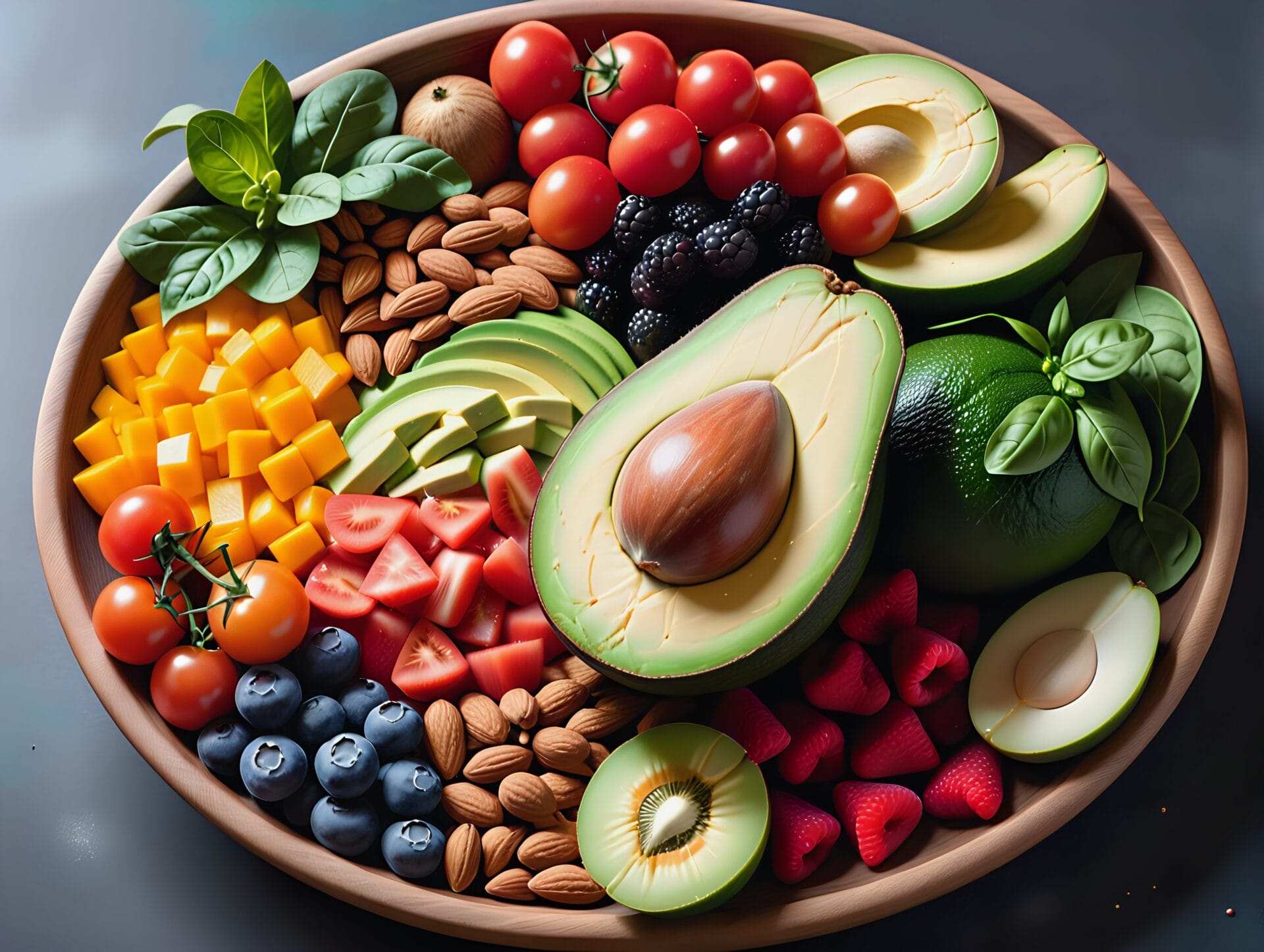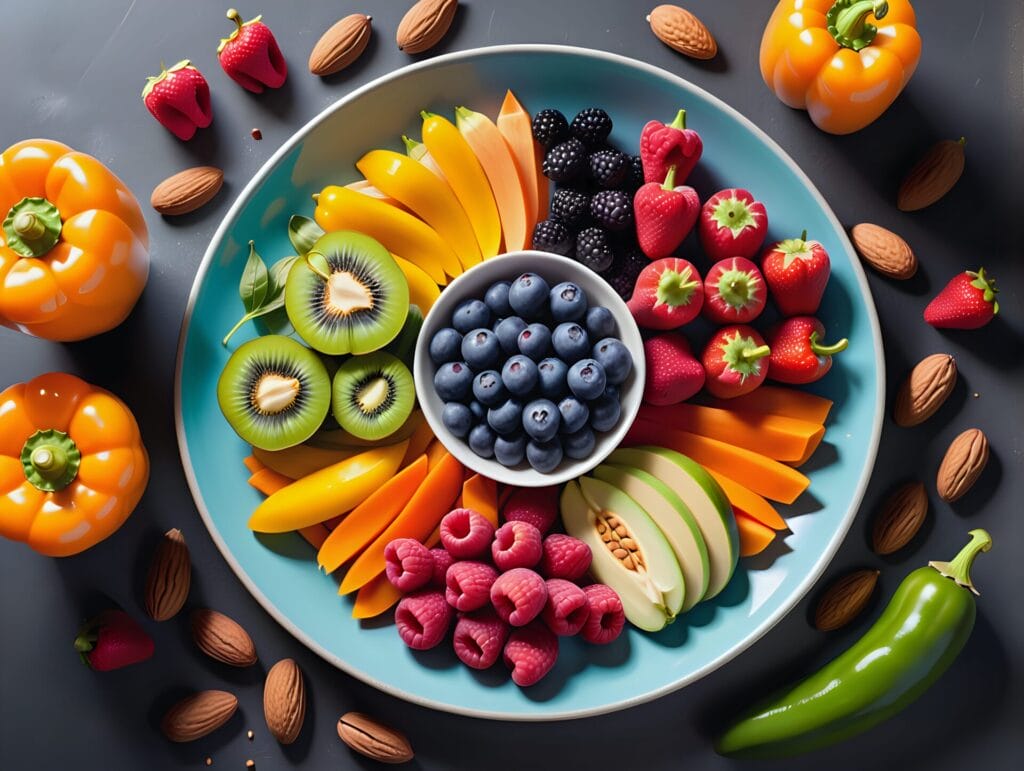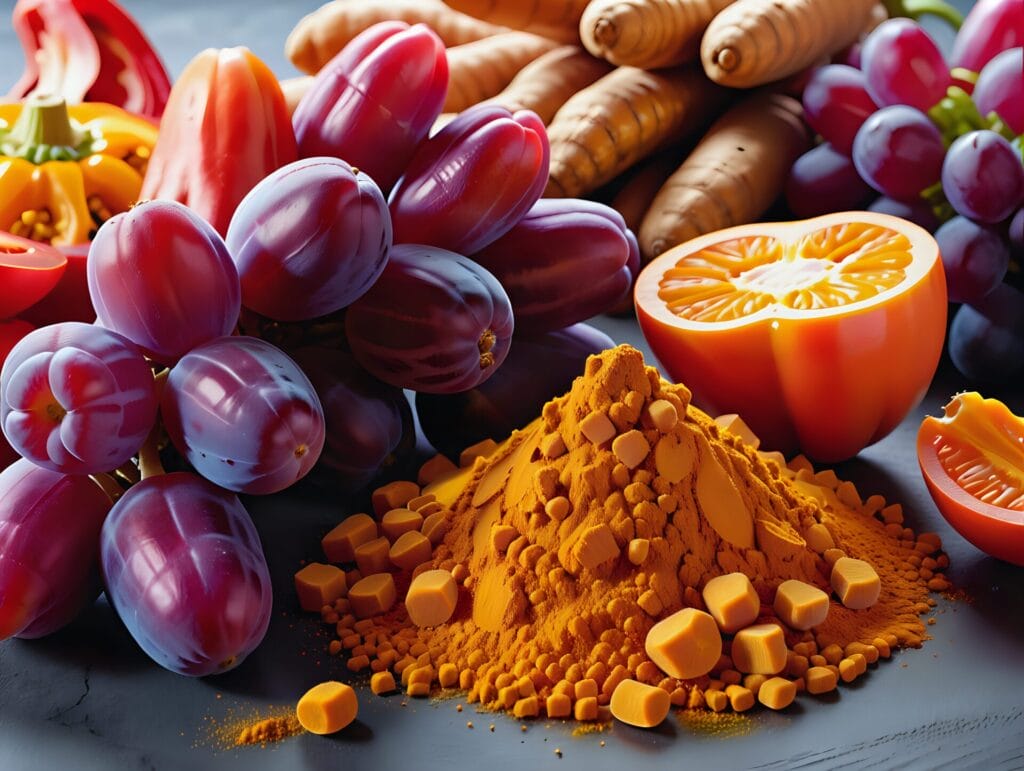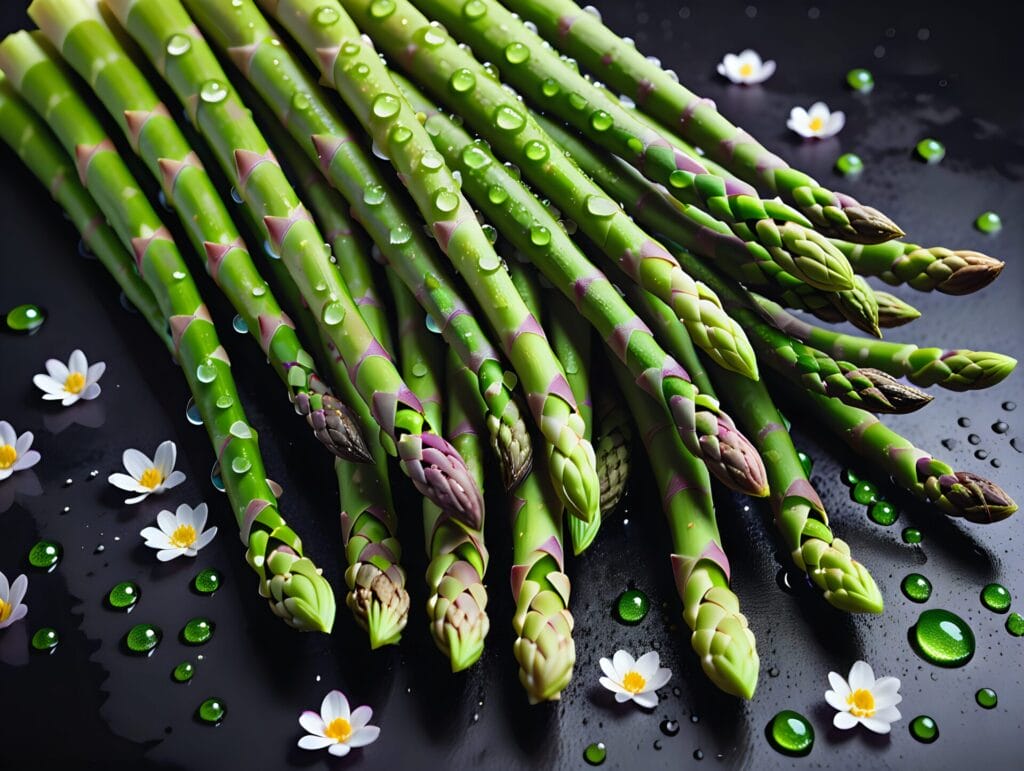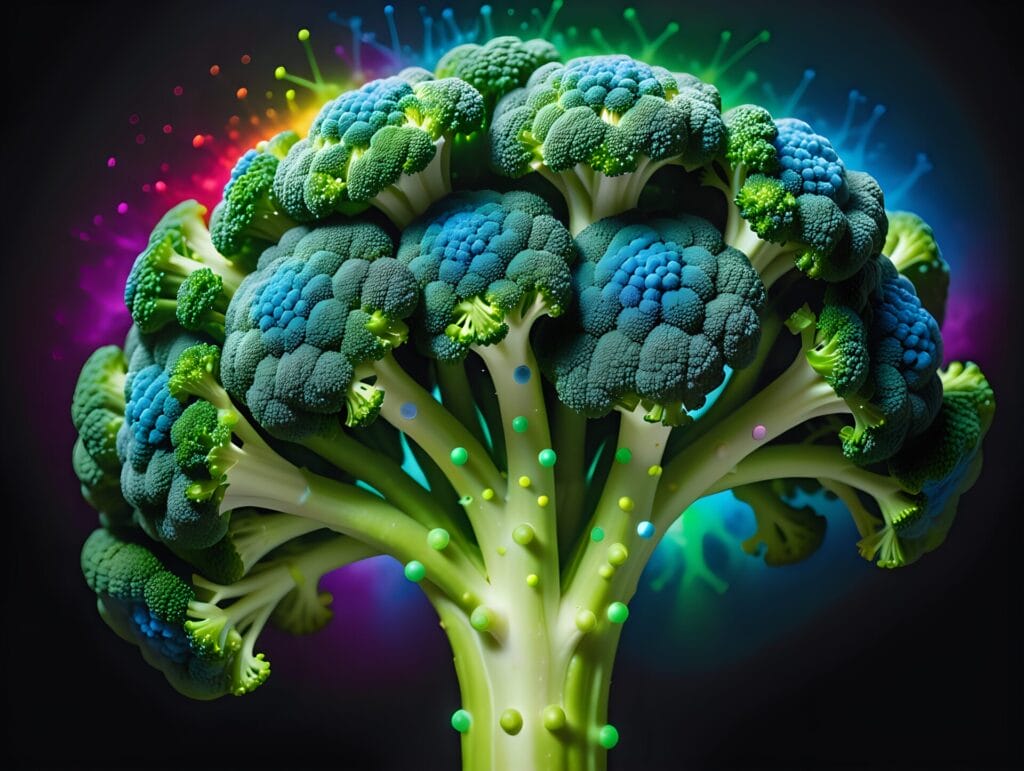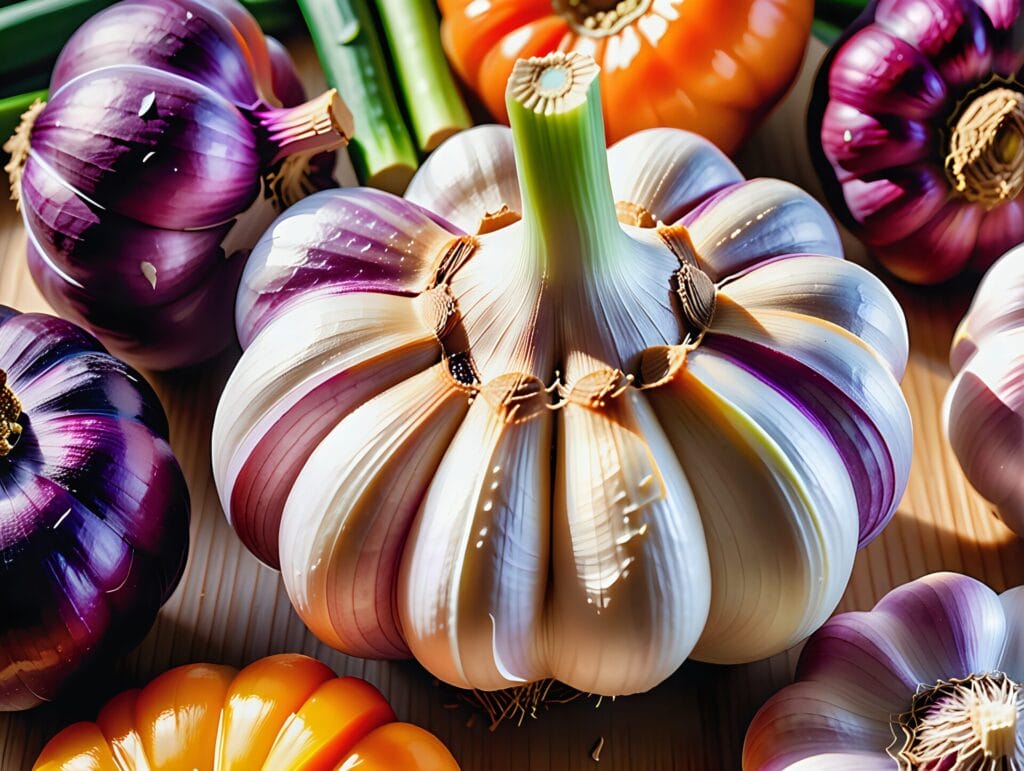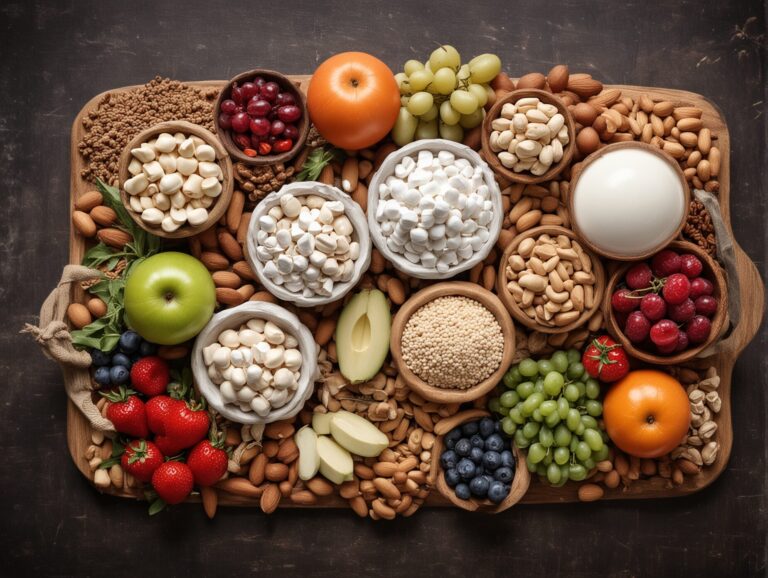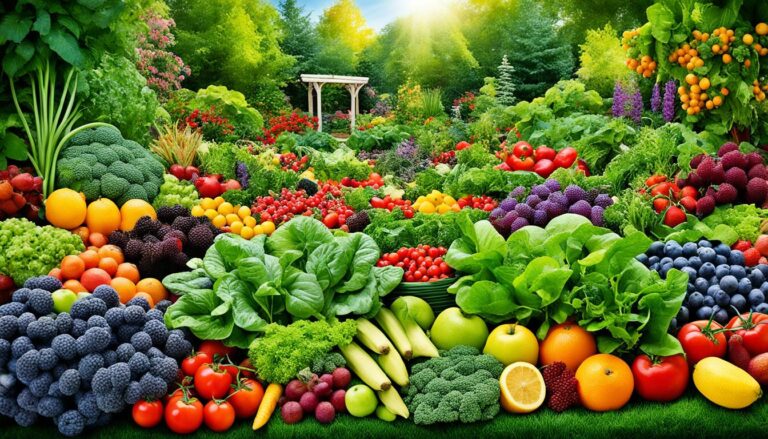Top Glutathione Rich Foods for Antioxidant Benefits
Embark on a journey to enhance your health by boosting glutathione levels through a purposeful diet rich in antioxidants. Discover the pivotal role that glutathione rich foods play in defending against oxidative stress and promoting cellular vitality. Glutathione, dubbed the “master antioxidant,” is critical for detoxification and maintaining physiological balance. Embrace a diet featuring the top glutathione containing foods and experience a wealth of wellness benefits.
Increasing your antioxidant intake isn’t merely about consuming random fruits and vegetables. It’s about focusing on specific superfoods like avocados, turmeric, green asparagus, and almonds, which are lauded for their exceptional ability to enhance the body’s natural antioxidant defense systems. Incorporating these foods into your everyday meals not only tantalizes your taste buds but also contributes to boosting glutathione levels, fostering a strong internal environment that can better withstand the rigors of modern stresses.
Understanding Glutathione and Its Antioxidant Power
At the core of our body’s defense system against oxidative stress lies glutathione…also known as GSH, a potent tripeptide composed of cysteine, glutamine, and glycine. This small protein is a frontrunner in the safeguarding of our cellular health, deftly maneuvering to neutralize reactive species and maintaining the integrity of vital cellular components.

Known as a master detoxifier, glutathione’s presence within our cells is indispensable for optimal physiological function. Its levels can be bolstered by incorporating a variety of glutathione rich foods and natural glutathione boosters into our diets, thus fortifying our natural defenses against environmental toxins and dietary pollutants. Let’s delve into the multifaceted roles this crucial molecule plays in our health.
The Role of Glutathione in Cellular Health
Within the bustling cities of our cells, glutathione acts as both a guardian and a janitor—protecting the delicate machinery from the constant bombardment of toxins and waste products. Each cell’s vitality depends heavily on maintaining adequate cellular glutathione levels, which are vital for the protection of cellular macromolecules and the preservation of metabolic homeostasis. This integral component of cellular defense asserts its prominence in supporting a robust biological system.
How Glutathione Protects Against Oxidative Stress
Oxidative stress, an enemy of cellular tranquility, can instigate damage to DNA, proteins, and lipids, potentially paving the way for chronic disease and accelerated aging. Glutathione steps in as a powerful ally, stabilizing these renegade reactive oxygen and nitrogen species before they wreak havoc. By so doing, it supports the delicate balance needed by cells to thrive and successfully perform their crucial physiological roles.
Glutathione Production and Its Importance in Detoxification
Our body’s ability to detoxify is inextricably linked to the synthesis of glutathione. The liver, our primary detoxification organ, utilizes glutathione in conjugation reactions, transforming lipophilic toxins into hydrophilic forms that the body can readily excrete. Emphasizing detoxification benefits, we can see that supporting our natural glutathione production through diet and lifestyle is not merely beneficial—it’s essential for sustaining life and promoting longevity.
Natural Glutathione Boosters in Your Daily Diet
Embarking on a quest to elevate your health profile doesn’t have to be complex. By integrating specific foods high in glutathione into your everyday nutrition, you can effectively engage an internal shield against oxidative damages. Almonds and turmeric, along with a variety of fruits and berries, are more than mere ingredients; they are powerful allies in boosting glutathione levels and enhancing your immune resilience and overall well-being.
Choosing Glutathione Enhancing Foods
In the pursuit of a glutathione enhancing diet, consider nuts like almonds, not only nutrient-dense but also proven to augment intracellular glutathione while simultaneously reducing DNA damage. Turmeric, famed for its curcumin content, catalyzes glutathione biosynthesis, safeguarding cellular integrity. A symphony of fruits and berries harmonizes the body’s antioxidant ensemble, laying the foundations for a fortified defense against environmental stressors.
Combining Diet with Lifestyle for Optimal Antioxidant Levels
Merging a diet rich in natural glutathione boosters with lifestyle modifications is a strategic path towards wellness. Securing sufficient rest and cultivating a habit of regular exercise can significantly optimize your body’s antioxidant levels. In embracing this holistic approach, one doesn’t merely aim at increasing glutathione production; rather, it fosters an environment where detoxification thrives, and vitality reigns supreme.
Glutathione Rich Foods to Include in Your Meals
Unveiling the best sources of glutathione involves exploring an array of nutritionally rich foods known to enhance the body’s antioxidant levels. Turmeric, with its active component curcumin, has been reported to elevate glutathione levels, thus showcasing its role as a spice that reaches beyond taste to offer significant health benefits. Avocado, a fruit cherished for its creamy texture, is not only a treat to your palate but also a potent contributor to your body’s glutathione stores, helping to decrease cellular damage.
Green asparagus stands tall amongst glutathione rich fruits and vegetables, balancing its detoxification properties with a refreshing flavor. When pondering over how to increase glutathione through diet, do not overlook the crunchy delight of almonds. This power-packed nut is an excellent glutathione booster that’s easy to incorporate into your daily snacking habits.
The gelatinous texture of okra might be distinctive, but so is its ability to increase antioxidant enzymes, including glutathione peroxidase, making it an invaluable addition to your glutathione-enhancing diet. Broccoli, the floriated powerhouse, continues this list with its ability to support glutathione production and potentially improve liver health.
Oxidation-fighting citrus fruits like oranges and the hydrating watermelon offer glutathione along with a refreshing burst of flavor, proving that nourishment can be both delicious and health-supporting. Regular intake of these fruits, whether in salads, juices, or as natural snacks, could significantly enhance antioxidant defenses.
Cruciferous vegetables such as kale and brussels sprouts represent a further powerhouse group. Rich in sulforaphane, these hearty greens can activate enzymes that are critical for detox pathways and for boosting your body’s glutathione levels. To maximize their health benefits, the preferred culinary techniques should involve minimal cooking, which helps preserve their precious glutathione content.
Keep in mind that while enriching your diet with these foods, the methods of preparation and storage play a crucial role. Cooking at high temperatures or prolonged storage can deplete the natural glutathione present in these power foods. To minimize such loss, choose gentle cooking methods and consume fresh produce promptly.
Embracing a diet filled with the best sources of glutathione is a step towards fortifying your body’s ability to combat oxidative stress and maintain cellular vitality. Whether adding a sprinkle of turmeric to your meal, enjoying a ripe avocado, or steaming fresh asparagus, each choice contributes to a glutathione-rich diet that supports your overall health and well-being.
The Surprising Benefits of Turmeric for Raising Glutathione
Often recognized for its warm, vibrant hue and as a staple in Indian cuisine, turmeric brings more to the table than just color and flavor. It plays a pivotal role in amplifying our body’s antioxidant capacity, especially when it comes to enhancing glutathione levels. As we explore the hidden facets of this golden spice, it becomes clear that its health benefits extend far beyond its traditional uses.
The magic of turmeric lies in curcumin, its principal compound, which has been shown through numerous studies to have a profound effect on our cellular defense mechanisms. With curcumin’s glutathione enhancement capabilities, turmeric emerges as a critical element in the world of glutathione rich foods, acting as a natural fortifier against oxidative damage.
Curcumin’s Role in Increasing Glutathione Levels
Curcumin’s profound impact on health is primarily due to its ability to modulate glutathione levels within the body. Studies conducted on animal and cellular models reveal how this compound can mitigate the effects of cytotoxic substances. This not only underscores turmeric’s antioxidant benefits but also positions curcumin as a powerful ally in the quest for homeostasis and cellular resilience.
Incorporating Turmeric into Your Diet for Antioxidant Boosting
Capitalizing on turmeric’s health benefits doesn’t require elaborate culinary feats. A sprinkle of turmeric in your smoothies, teas, or favorite dishes can contribute significantly to an antioxidant boost. For those seeking a more potent impact, turmeric extracts may provide a concentrated dose of curcumin, further encouraging glutathione enhancement and comprehensive antioxidant support.
When considering the incorporation of turmeric into your diet, it’s essential to remember that frequency and consistency are key. By regularly including this golden spice into your meals, you unlock a myriad of health benefits, including bolstered defenses against environmental stressors and a rejuvenated immune system, thanks to the synergistic action of curcumin and glutathione working hand in hand.
Avocado: A Creamy Source of Dietary Glutathione
When considering natural sources to bolster your intake of antioxidants, avocados emerge as a sterling choice. This nutrient-dense fruit is not only known for its rich, creamy texture and versatility but also for its remarkable health benefits. Among these benefits is its contribution to our dietary glutathione levels, a key factor in enhancing the body’s antioxidant defenses. It’s no surprise that avocados are frequently highlighted as one of the foods high in glutathione owing to their nutritional profile.
Avocado’s Antioxidant Profile and Glutathione Content
Avocados are abundant in a variety of nutrients and, importantly, they contain antioxidants that are essential for overall health. It’s the avocado’s antioxidant benefits that make it stand out as a superior addition to a health-conscious diet. Research indicates that the regular consumption of avocados can lead to increased levels of glutathione in the body, which in turn helps to mitigate oxidative stress and decrease cellular damage. This process is paramount in maintaining cellular homeostasis and protecting against the early onset of degenerative diseases.
An insightful study examining the influence of avocado oil on diabetic rats presents compelling evidence. The results suggested that avocado oil significantly raised glutathione levels while also reducing lipid peroxidation and the amount of reactive oxygen species. These findings underline the potential of avocados in reinforcing the body’s innate defense system against oxidative harm and also in contributing to the reduction of cellular impairment.
Indeed, such protective qualities highlight the importance of dietary choices in cultivating wellness and preventing disease. Regularly incorporating avocados into one’s diet can be a delicious and powerful way to support the network of antioxidants within us. Whether included in a smoothie, salad, sandwich, or consumed directly, avocados make enhancing our glutathione intake both appealing and effortless.
Green Asparagus: A Vegetable High in Glutathione
Green asparagus is a stellar performer in the constellation of foods high in glutathione, notable for its robust antioxidant and anti-inflammatory attributes. Savvy health enthusiasts seek out green asparagus for its glutathione content, aiming to weave this nutrient into their daily diets. Recognizing the virtues of green asparagus in the health and wellness sector is intrinsic to maximizing glutathione intake and reaping the potential benefits for detoxification and cellular health.
Maximizing Glutathione Intake from Asparagus
When it comes to optimizing the wealth of nutrients found in green asparagus, essential strategies include preparing it in a way that conserves its coveted glutathione content. Regular consumption of green asparagus as part of a balanced diet may contribute significantly to elevated glutathione levels, provided that it retains its nutritional integrity post-cooking.
Best Cooking Methods to Preserve Glutathione in Asparagus
It’s not merely the act of adding asparagus to your plate that matters—it’s how you prepare it that could make all the difference. To preserve the green asparagus glutathione bounty, quick, gentle cooking methods are recommended. Steaming or blanching for a short duration can be instrumental in maintaining the vegetable’s glutathione level, which could otherwise be diminished by excessive heat or overcooking. This approach to food preparation allows one to enjoy the harmony of taste and health, serving as a reminder of the thoughtful art that goes into crafting a glutathione enhancing diet.
Almonds: Nutritious Nuts Elevating Glutathione Levels
Often nestled in snack bowls and praised for their heart-healthy fats, almonds are making waves in the nutrition world for an entirely different reason. These so-called nuts, actually the seeds of the almond fruit, pack a punch when it comes to vital antioxidants. One of their most remarkable benefits is the ability to serve as a nutritious nut high in glutathione, a critical defender against oxidative stress.
With the spotlight on foods high in glutathione, almonds stand out for their contribution to our body’s antioxidant systems. Research has pointed to a significant almonds glutathione boost, particularly evident in smokers whose dietary routines were enriched with these robust seeds. This increase not only underscores the potency of almonds as a top glutathione containing food but also their role in diminishing cellular damage.
It’s not just about munching on a handful of almonds to quell afternoon hunger pangs—these nuts embody a much greater potential for health. Embodied within each almond is the capacity to elevate glutathione levels, which in turn amplifies the body’s capability to repair and maintain healthy cells. Integrating almonds into daily eating habits can be a simple yet powerful step towards a stronger, more resilient antioxidant defense system.
Bring on the Brassica: Broccoli’s Glutathione Boosting Effect
Among the wonders of the vegetable world, broccoli stands out not only for its vibrant green hue and taste but also for its glutathione synthesis capabilities. As a member of the cruciferous vegetables family, broccoli is more than a side dish; it’s a nutrient powerhouse with the potential to substantially impact our health, particularly by increasing glutathione production.
Glutathione, essential for combating oxidative stress and rejuvenating cells, finds one of its natural boosters in this vegetable. The science community has turned its attention to broccoli’s unique makeup to unravel the secrets behind its beneficial effect on the body’s glutathione levels. What makes broccoli a leading character in this play is the presence of certain compounds that may tickle the liver into generating more of this antioxidant.
Discovering Broccoli’s Compounds that Promote Glutathione Synthesis
When exploring the intricacies of broccoli and its role in broccoli glutathione synthesis, one can’t help but marvel at the complexity of this seemingly simple vegetable. Animal studies suggest a clear connection between the consumption of broccoli and an uptick in the liver’s production of glutathione. While findings are still burgeoning and human clinical research is required to cement these advantages, the implications are tantalizing for those seeking natural ways to augment their antioxidant arsenal.
The intricate relationship between diet and wellness underscores the relevance of cruciferous champions like broccoli in our meal plans. Broccoli’s capacity for increasing glutathione production is only one facet of its broad nutritional profile, promising to not only enhance immune function but also to fortify the body against the everyday environmental and internal challenges that lead to increased oxidative stress.
As we await more conclusive evidence from human studies, there’s enough substantial data to consider integrating broccoli and its cruciferous kin into our daily diets. Doing so could be an essential step toward optimizing our health, strengthening our antioxidant defense, and, potentially, paving the way for a more balanced and resilient bodily ecosystem.
Spinach: A Leafy Green with a Glutathione Bonus
Amidst the pantheon of leafy greens high in glutathione, spinach holds a place of honor, delivering not just essential vitamins and minerals, but a generous bonus of glutathione—the body’s master antioxidant. Spinach’s lush leaves serve as a versatile culinary ingredient that can easily raise your spinach glutathione content intake, whether used fresh in a vibrant salad or lightly steamed in a side dish.
While the green vibrancy of spinach invites us to savor its nutrients raw, those aiming at preserving its abundant glutathione may opt for gentle cooking methods. A swift sauté or a brief blanching keeps the glutathione levels intact, allowing spinach to shed its superfood potentials into our meals and bodies. The wisdom of safeguarding this key antioxidant property in our cooking is emblematic of a health-conscious lifestyle.
Spinach is not just an ordinary leafy green—its high glutathione presence is indicative of nature’s propensity to bundle taste with potent health benefits. Consuming spinach, abundant in glutathione, equips our cells to fend off oxidative stress and fortifies our overall health. Embracing spinach in our diet, therefore, is a simple yet impactful step toward wellbeing, rich in the compensations of nurturing our bodies with naturally occurring antioxidants.
Unlocking Antioxidants: The Power of Fruits like Oranges and Watermelon
The pursuit of enhancing glutathione, a potent antioxidant within our body, can be a delicious endeavor when we turn to the vibrant world of fruits. Bursting with a plethora of health-boosting qualities, certain fruits are not only tantalizing to our taste buds but are also powerful allies in the battle against oxidative stress.
How Citrus Fruits Influence Glutathione Production
The zest and zing of citrus fruits conceal more than mere flavor; they are a treasure trove of vitamin C, which is crucial in synthesizing glutathione. Oranges and grapefruits, among other citrusy delights, serve as a natural catalyst, augmenting the body’s capability to generate citrus fruits glutathione, thus strengthening our antioxidant defenses from within. Their juicy richness infuses our system with much-needed nutrients, enhancing detoxification and promoting a thriving, energetic physique.
Watermelon: Refreshment and Antioxidants in One
Synonymous with summertime bliss, watermelon offers more than mere refreshment on a hot day. This juicy, sweet fruit is studded with micronutrients and delivers a dose of watermelon glutathione, contributing to the antioxidant-rich profile needed for maintaining a healthy balance. A chilled slice serves as a reminder that nourishing the body can be a delightful, hydrating affair, providing us with antioxidants that aid in neutralizing free radicals and supporting overall cellular health.
Garlic: The Strong-Scented Glutathione Enhancer
In the symphony of health-promoting foods, garlic plays a leading role with its potential to act as a garlic glutathione booster. Acknowledged not only for its robust aroma and culinary prowess, garlic’s nutritional composition—rich in sulfur-containing compounds—positions it as an influential agent in the enhancement of glutathione levels.
The profound impact garlic has on health extends to allicin antioxidant benefits, which reflect its capacity to bolster the body’s defense mechanisms. The value this allium vegetable brings to the table in terms of promoting cellular health and supporting detoxification processes is largely thanks to its impressive glutathione-boosting properties.
Allicin and Its Contribution to Glutathione Levels
Allicin, a bioactive compound found abundantly in garlic, exemplifies nature’s ingenuity in crafting potent natural health aids. As a natural glutathione booster, allicin works hand-in-hand with glutathione, enhancing its protective effects. Incorporating fresh garlic into your diet not only promises an infusion of flavor but also an increase in the crucial antioxidant glutathione, pivotal for maintaining cellular integrity and efficient detoxification pathways.
Cruciferous Vegetables and Their Glutathione Content
Delving into the realm of natural health boosters, cruciferous vegetables emerge as champions in the fight against oxidative stress, courtesy of their rich glutathione content. Regularly featured in research for their health-promoting properties, these super-veggies are not only nutritious but also vital in combating the detrimental effects of toxins through enhanced detoxification benefits. With an impressive array of varieties, from broccoli to kale, these power-packed greens are an indispensable part of a diet aimed at fostering cellular repair and resilience.
The Science behind Sulforaphane’s Role in Glutathione Production
Central to the conversation about cruciferous vegetables and their health properties is sulforaphane, a compound receiving considerable attention for its role in glutathione synthesis. Studies suggest that sulforaphane spurs glutathione production by activating genetic pathways involved in detoxification. This natural compound has been observed to upregulate the body’s capabilities to expel harmful contaminants, securing its status as a fundamental component in a proactive health defense strategy.
Integrating Cruciferous Vegetables into a Glutathione-Rich Diet
Strategically incorporating a variety of cruciferous vegetables into daily meals can scale up the body’s antioxidant capacity, delivering notable detoxification benefits. Regular consumption of these nutrient-dense plants is synonymous with an uptick in cellular glutathione levels, offering a fortified shield against the oxidative onslaught that can lead to a spectrum of health challenges. From vibrant salads to savory roasts, these cruciferous staples can be enjoyed in countless recipes, transforming every dish into a health-boosting delight.
Indulging in Berries for Their Glutathione and Antioxidant Properties
Berries, nature’s vibrant and flavor-packed gifts, are celebrated not only for their delectable taste but also for their impressive nutritional profile. Among the array of healthful compounds they contain, berries high in glutathione stand out for their remarkable ability to combat oxidative stress and bolster our antioxidant defenses.
To fully leverage the antioxidant properties of berries, it’s crucial to identify those with the greatest concentration of glutathione. This approach empowers us to harness the full spectrum of health benefits these delightful fruits offer, helping to revitalize our system from the cellular level.
Identifying Berries with the Highest Glutathione Concentration
Navigation through the colorful world of berries reveals that certain types, such as strawberries, blackberries, and goji berries, are particularly endowed with high glutathione levels. These berries serve not merely as palatable treats but as potent allies in nourishing the body with vital antioxidants. Actively seeking out and consuming these varieties ensures that one’s dietary regimen is ripe with glutathione, fostering a robust line of defense against cellular damage.
Creative Ways to Add More Berries to Your Diet
Integrating a medley of these antioxidant-rich berries into everyday meals can be both enjoyable and inventive. Consider whipping up a morning smoothie infused with mixed berries, layering yogurt with fresh berries for a nutritious parfait, or simply savoring them as a fresh, juicy snack. These simple, yet inventive, culinary incorporations contribute to a vibrant and health-focused lifestyle, filled with the natural goodness of berries teeming with glutathione.
Your Comprehensive Guide to Boosting Glutathione Through Diet
Elevating your health can be as natural as modifying your diet. By emphasizing foods that contribute to boosting glutathione levels, you can tap into a myriad of health benefits. This comprehensive guide will help you navigate through a glutathione enhancing diet designed to optimize your antioxidant intake. From the fresh burst of berries to the hearty crunch of almonds and the zing of garlic, the foods you choose can play a substantial role in replenishing your body’s most pivotal antioxidant.
A glutathione enhancing diet isn’t just about the occasional indulgence in top glutathione containing foods; it’s about integrating them consistently into your meals. Think of turmeric spicing up your dishes, almonds enriching your snacks, and garlic elevating your sauces—all while fortifying your antioxidant shield. Berries, not just for desserts but as a nutritional staple, and the assertive presence of cruciferous vegetables, bring you a step closer to achieving vigorous antioxidant status.
To fully harness the benefits of these nutrient-dense foods, it’s also essential to pair them with healthy lifestyle practices. Regular exercise and adequate sleep are critical co-factors in this journey towards boosting glutathione levels. Remember, such dietary and lifestyle shifts should be approached with guidance from healthcare professionals who can provide personalized advice tailored to your individual needs.
Utilizing a natural supplements based glutathione precursor protocol like our Viprox Therapy can greatly enhance your over all health. The Viprox Protocol consists of Viprox and Viprox Junior packages. The packages contain GSH Complex for restoring, strengthening and balancing your immune system. Une Vie for enhanced hydration and Triozyme enzymes that support improved digestion.
- Glutathione for Hangovers: Your Recovery Solution - July 2, 2024
- Top Glutathione Foods High in Antioxidant Power - June 30, 2024
- Boost Your Health with Top Foods for Glutathione - June 21, 2024
